Cleaning is the physical removal of foreign material and organic material. Cleaning physically removes rather than kills microorganisms. It is accomplished with water, detergents, and mechanical action.
Sanitizing lowers the number of germs on surfaces or objects to a safe level, as judged by public health standards or requirements. This process works by either cleaning or disinfecting surfaces to lower the risk of spreading infection.
Disinfecting involves the destruction of disease-producing microorganisms, including bacteria, viruses, and fungi. This can include the destruction of bacterial spores on environmental surfaces.
Sterilizing is the reprocessing level that is required regarding critical medical equipment and devices (equipment or devices that enter sterile tissue). Sterilization results in the destruction of all forms of microbial life including bacteria, viruses, spores, and fungi.
You may also find these resources useful:
- Rescue Concentrate Product Sheet
- Rescue Ready-to-Use Liquid Product Sheet
- Rescue Wipes Product Sheet
- Blog: Spot the Fomites
- Blog: Are you Putting your Practice in Jeopardy
Video: Difference between Sanitation and Disinfection
